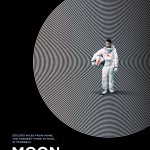Now that’s more like it. A bit more news finally this week. In fact, there’s a lot of news mainly due to the CES 2010 currently happening in Vegas. Most of the news came out of the show, and most of it was about 3D, which was kind of predictable. While everyone was talking up 3D HD, I had to regress from HDMI back to component due to a broken TV, and then suffer the illogical copy protection system that’s present. Hollywood can be so freaking paranoid at times, and even if their fear is justified, they’re still fighting on the wrong front when it comes to online piracy. How is stopping someone from watching upscaled DVDs through component output going to help stop online piracy? I also took the time to update the MeGUI guides for Windows 7, which works quite well after some initial tweaking needed due to 7’s new built in codecs framework.

Let’s start with the copyright news. The Pirate of the Week award goes to Sony, who managed to not only leak a “still at the cinemas” movie to the PlayStation store in perfect digital quality, but also managed to make it a free download for those quick enough to grab this very special offer. But at least the file was DRM protected so that it couldn’t have been leaked online, right? Um, not quite, and if you search the regular BitTorrent networks, you’ll find a “PSPRip” version of the film which came from this Sony gift. Or should that really be “SonyRip”?
I know the MPAA has been talking about wanting to release movies digitally while they’re still showing at the cinemas, something that cinema owners are vehemently against, but what Sony has done here is probably not what the MPAA had intended. Although the MPAA still had time to roll out a new DRM scheme, which basically “pirates” Disney’s Keychest initiative. Basically, it’s a purchase once, view everywhere scheme, and they intend to do this by adding DRM and online authentication to everything. It seems that the lesson the MPAA learned from the RIAA’s failed experiment with DRM was that it failed because interoperability, that is the ability to play the file everywhere, was not ensured. That’s a valid lesson, but online authentication means that if people are away from the Internet, then their entire movie library becomes useless. And I’m sure there will be device manufacturers that do not buy into the MPAA’s DRM licensing scheme, and hence, interoperability will still be an issue. I think the biggest lesson from the RIAA’s DRM fiasco should be that consumers just don’t like DRM, and that in the end, it wasn’t really necessary anyway since DRM free or easily ripped versions of the music (or movie) will still be widely available and ready to be pirated online regardless of how many layers of DRM you put on the music (or movie).
In fact, just this week, the “consumers don’t like DRM” argument was put forward to the courts in relation to the appeal of the Joel Tenenbaum verdict, the student fined $675,000 of downloading 30 songs. The argument is that because DRM limits choice, the only choice then becomes piracy. I’m not sure I agree with this argument, and I certainly don’t think it will hold up in court, because DRM free alternatives were available in the form of CDs, which can then be easily made into digital form legally (not falling foul of the DMCA because CDs are not DRM’d). The other argument that Tenenbaum’s lawyers will use is that the rewarded damages are just too excessive, which is harder to argue against. It wasn’t as shocking at the $1.92m verdict awarded against Jammie Thomas-Rasset for 6 songs less than Tenenbaum, but the RIAA did it to send a message.

But Sony didn’t like ‘Moon’ at all and refused to support it for an Oscar in order to fight online piracy
While still stinging from the “SonyRip” incident, I guess the suits at Sony HQ decided to balance this kind gift out with something nasty, which came in the form of not supporting their own film, Moon, for an Oscar for which the film’s star Sam Rockwell actually has a chance of winning. The lack of support comes in the form of not releasing screeners to voters, which need to be watermarked to prevent piracy, but Sony doesn’t want to spend the money. Sony says they need the watermarking because the movie is yet to be released in the US, although even the Blu-ray version has been available in the UK since mid November, so there’s hardly a lack of a good source for the pirated version. Another quick check on the regular BitTorrent networks and a DVD rip of Moon is indeed available. The cost of issuing the watermarked screeners would probably be less than the cost of the PR campaign Sony now has to put out to counter criticism of this move from celebrities such as Iron Man Director Jon Favreau and Coraline writer Neil Gaiman. The next step for Sony would be to block the release of a film entirely from all channels, if it’s really that serious about piracy (although it might still get leaked online). Better to destroy the film just after it comes out of post production, than to suffer from piracy, right?
While not doing something as extreme, and for entirely different reasons, but Warner and a few other studios (surprisingly, not including Sony) put pressure on DVD rental vending machine operator Redbox by refusing to give the right to distribute their movies through this cheaper and potentially revenue hurting new distribution method. Redbox even had to use made up cover art as the studios wouldn’t give permission to use the original artwork, but even the made up art work has come under legal pressure, although Redbox denies any wrongdoing. Warner then attacked Netflix and forced them to delay the rental of their DVDs, although they did offer as a compromise an extended range of movies that will be made available via Netflix’s digital service. All of this is about fighting new delivery methods that are cheaper and more efficient, to protect the dying business model that studios rely on. DVD rental revenue is actually up (cheap stuff sells more, wh0 would have thunk it?), but while the studios were busy fighting online piracy, they forgot that the Internet could also have been used to deliver new services and acts as a new distribution method for their content, and instead passed up the opportunity to the likes of Netflix and Redbox. Just like how the music industry passed up online music selling over to Apple’s iTunes, which is now making huge amounts of money that the music labels should have been making themselves if they had the vision to embrace the Internet, rather than not seeing anything good having come from the Internet at all (to paraphrase Sony Pictures CEO Michael Lynton).
Well if you can’t stop the piracy at the source, then perhaps you can go to the other end. The French government, now the symbolic head of a global crusade against online piracy, plans to put a piracy tax on Google which will be quite a little earner, as well as doing absolutely nothing to stop piracy just like every other initiative.

Onto HD, or more accurately, 3D HD news. Let’s just go quickly through just a small selection of 3D related news items, most to have come out of the CES. ESPN is set to launch a 3D channel for sports programming, including the opening game of the FIFA 2010 World Cup.
Sony, Discovery and IMAX are set to do the same, but we’ll have to wait until 2011 for the new channel. After Toshiba’s first solid, but otherwise uninspiring Blu-ray player, the company’s next three Blu-ray players will be a little bit more feature packed, and yep you guessed it, 3D enabled. Well actually, only one model will be 3D enabled and it won’t be available until later in the year, but the two soon to arrive models will have Netflix, Vudu, CinemaNow and Pandora streaming support, and Wi-Fi connectivity on the more expensive of the two models. On the PC front, PowerDVD maker Cyberlink demonstrated 3D Blu-ray on a PC. The PC should have an easier path to 3D, since most have the processing power required to decode the “twice the information” Blu-ray video stream (one stream for each eye), and everything else can be done in software. Of course, you’ll still need a new monitor and a pair of glasses.
Now there has been some confusion in regards to the requirement for 3D, and I’m still not 100% clear on all aspects of it, but basically, you’ll need a new TV or monitor. For the PC monitor, you’ll need one that can display 120 Hz, but most can only do 60Hz. The reason you need 120Hz is because due to the need to provide two separate pictures (one for each eye), a 60Hz monitor effectively only gives 30Hz to each eye, which is not nearly good enough to ensure a headache free experience. On the home theater front, there’s also some confusion as to whether HDMI 1.4 is needed for 3D Blu-ray. The answer is probably no, since the 3D Blu-ray specs say that the PS3 can be upgraded via firmware to support 3D Blu-ray, and PS3s don’t have HDMI 1.4 connectors. The part of the HDMI specs that provides for the higher bandwidth video transfer needed by 3D Blu-ray apparently already exists, but it was up to manufacturers whether they wanted to support it or not, and since there was no demand for it, most do not support it. HDMI 1.4 will mandate support, and so expect most new 3D ready HDTVs to use this version of the connector, although against it’s not strictly required. Panasonic’s 3D Blu-ray players will actually have both a 1.4 connector and a 1.3 connector for connecting to legacy equipment. And just because a HDTV displays at 120Hz (and even if it had HDMI 1.4), it doesn’t mean that it will be 3D ready. Most TVs display 120Hz by taking a the 60Hz input and then frame double, or even frame quadruple to 240Hz. However, 3D ready sets will need to be able to accept and process the true 120Hz signal that 3D Blu-ray players will output, and most can’t do that at the moment. That’s my take on it anyway, but basically, if the TV doesn’t say 3D ready, then it’s not 3D ready, probably. This information and the new logo for 3D Blu-ray can be found in this forum thread.
And it was a refreshing change to see LG announce a new Blu-ray player and it had nothing to do with 3D. Instead, it has a built in 250GB hard drive, not for storing managed copies (not yet anyway), but for storing downloads from VUDU as well as the user’s own content. Speaking of Managed Copy, there was hardly any mention of it at the CES, apart from Cyberlink demonstrating a jukebox system for Blu-ray which will utilize Managed Copy. Disappointing, but not surprising.
![]()
And in gaming, not much other than more 3D stuff, with the PS3, Microsoft still showing off Project Natal, although it won’t be here until 10 month or so from now, so it’s hard to get excited over it yet. Nothing much for the Wii, except it may support Netflix at some stage.
The CES concludes today, so there will be more digestion of the news over the coming week I suppose, as well as any last minute announcements. I’m getting a bit tired of this 3D thing anyway, because I still can’t see past it as just another short lived gimmick, which 3D will always be until the type where you don’t need glasses becomes mainstream. See you next week.



